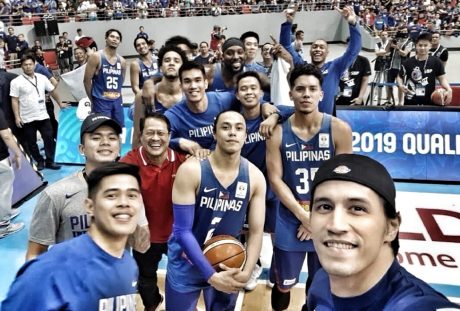
A common argument I’ve been seeing directed at people who dare write about Filipino-style basketball in a critical way comes in the form of this statement…
You probably don’t play basketball so you won’t understand where we are coming from.
Funny that. If there is anything more bizarre than Filipino exceptionalism, it is Filipino Basketball Exceptionalism.
As far as one can easily tell, whether one plays basketball or not does not constitute bar nor license to writing about basketball any more than the notion that being or not being a politician makes one a better or incompetent political writer. In fact, we can go further to suggest that there really is nothing special about an ability to play basketball — because most Filipinos, from street tambays to elite competitive athletes, and even up to politicians, lawyers, rocket scientists, soldiers, moms and dads, and people from all forms of sexual orientation and gender can play basketball.
In short, there is nothing special about being able to play basketball and, as such, no notion of exclusivity in the club of its players and those who can talk about it, write about it, and criticise it. What perhaps these basketball exceptionalists mean is Filipino-style basketball. In that I am inclined to agree. Only Filipinos can play Filipino-style basketball. And this is the sort of basketball that was at play the other day just before the brawl between Gilas Pilipinas and the Australian team broke out.
Gilas was already losing to the Aussies, and many observers pointed out that they were losing because they were playing Basketball à la Filipina — possibly thanks to (1) the mediocre Cold War Era coaching of their chief coach Chot Reyes and (2) the tambay mentality that forms the very core DNA of Filipino-style basketball. Worse, the epic brawl that transpired was, according to die-hard fans, done in the name of “Pinoy Pride” and applying a mind only true “basketball people” would understand. They justify the intent, but the results tell a different story. The Aussies went on to win the game. Ultimately, that is what will be on record as far as FIBA’s historical account is concerned.
The bottom line here is that whatever the Aussies did, it worked and delivered results. They won the game with the added bonus of making Gilas Pilipinas (and Filipino basketball fandom) look like a bunch of cavemen to the international community. That’s what people who are easily provoked to anger at the slightest slight get. In this instance, the Filipino cagers and their groupies walked into a trap set (deliberately or inadvertently, we will never know) by the Australian team. Filipinos were outflanked — bombed from an angle they never even knew existed. They lost sight of the objective, which is to score more points than the enemy. This is another instance where “pride” and ego delivered nothing.
As far as the game itself is concerned, there is really not much for sport writers to work with. The Gilas-Australia game that was transpiring before the brawl erupted was not only unremarkable, it was a complete disgrace for the Philippine team in terms of the quality of play they put up against the Aussies. But the broader social behaviours observed and the sentiments expressed as a result of the brawl evidently provides rich insight into the underbelly of the Filipino psyche. Proof of this is the fact that this article is the fifth consecutive one on the topic in just two days.
Filipinos should take this opportunity to learn some lessons from this quaint fracas and use that learning to build a bit more character. The alternative is to continue looking for “outside forces” to blame their failure on which is the road Filipinos have been on since independence was granted them by the United States in 1946.

No comments:
Post a Comment